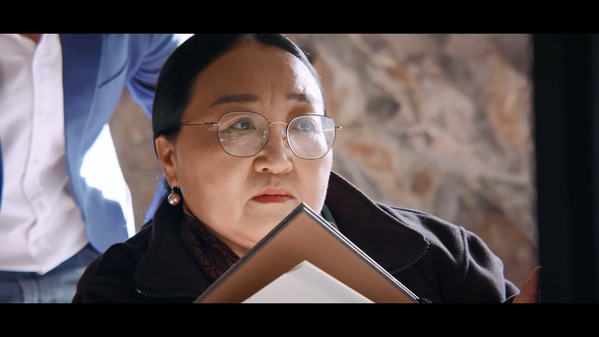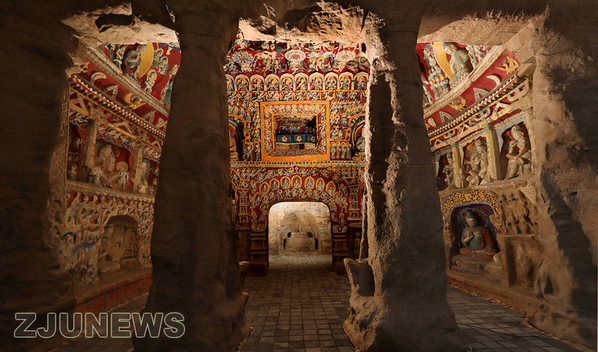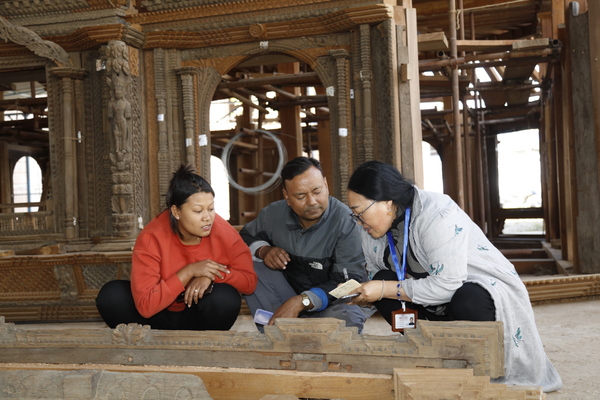Prof. LI Zhirong: master of past and present, archaeology and technology
[Message from the editor: LI Zhirong, professor of archaeology, is one of the main characters featured in the newly released university video. She led the interdisciplinary team to create the world’s first movable 3D grotto replica. This technology has been applied across China and beyond to give cultural relics a second life. Let’s explore her story of a fusion of archaeology and technology.]
Humble Beginnings
Close to a decade ago, Prof. Li Zhi Rong, made a decision – a decision that brought her from Beijing, the capital of China, to Zhejiang University in Hangzhou. Back in the autumn of 2011, Prof Li made a decision that would, many years later, reverberate through the local and international archaeological community.
Whilst the growing interdependence and inter-relationship between archaeology and technology was well understood then – it was after all, technology, that enabled the documentation of archaeological discoveries since the late 19th century – there were few attempts at large-scale digitalization of archaeological sites and even fewer attempts at re-creating these sites from the garnered digital data.
These were uncharted waters – unmapped areas where few had ventured before. However, Prof Li was undeterred. Determined to preserve China’s rich cultural heritage for future generations, she would pioneer the project and all related efforts.

The ZJU Effect
Currently the Vice Director of the Cultural Heritage Institute of Zhejiang University, Prof Li has led various projects of immense national and historical importance. Many of these projects are highly interdisciplinary in nature, harnessing the technological prowess of Zhejiang University’s engineering expertise and combining it with the University’s deep sense of mission and passion for China’s culture and history. In Prof Li’s own words, she “was in the right place at the right time.”
Zhejiang University provided the talent, infrastructure and environment for Prof Li – a solid foundation for an archaeology professor to embark on her journey to digitalize the ancient caves of China. Supported by the university leadership, Prof Li went on to further develop and utilize advanced photogrammetry and high-fidelity 3D printing.
These methods became integral components in the digitization and preservation of some of China’s more significant archaeological sites – the most well-known of which is the Yungang Grottos, a UNESCO World Heritage Site.

International Impact
The impact of Prof Li’s work extends beyond the borders of China. In the aftermath of the 2015 Nepal earthquake, at the invitation of the Chinese Academy of Cultural Heritage and the Department of Archaeology under the Nepalese Ministry of Culture, Tourism and Civil Aviation, Prof Li led a team to provide cross-border archaeological assistance.
Together with Prof. DIAO Changyu and Prof. CAO Jinyan, the team provided the technical know-how in creating and preserving digital data of the Taleju Temple at Kathmandu Durbar Square. Up till this day, this project has stood as a shining example of how technology, when harnessed properly, can intersect beautifully with archaeology to protect and preserve irreplaceable cultural sites and the collective intangible heritage associated with it.

Into the future
Looking ahead, this technological advancement will continue to leave a profoundly positive mark on the development of archaeology in China and in the world. When asked what she hoped to achieve in the new year, Prof Li’s answer was succinct yet impactful.
“To be an enabler of others,” was her reply.
Prof Li hopes to use the technology mastered by her team to enable other cultural organizations to achieve their goals in digitalization and preservation of cultural sites and relics. To this effect, Prof Li and her team hope to build a large-scale data base that can safely store and preserve the digital information of as many cultural sites and artifacts as possible.
In doing so, Prof Li believes that her team will accomplish their original mission of serving society through the timely and reliable preservation of culture and heritage. This would enable future generations to have the same high quality access to historical sites that our forefathers enjoyed.
Writer: Ian Chew
Editor: CHEN Weiying & TIAN Minjie